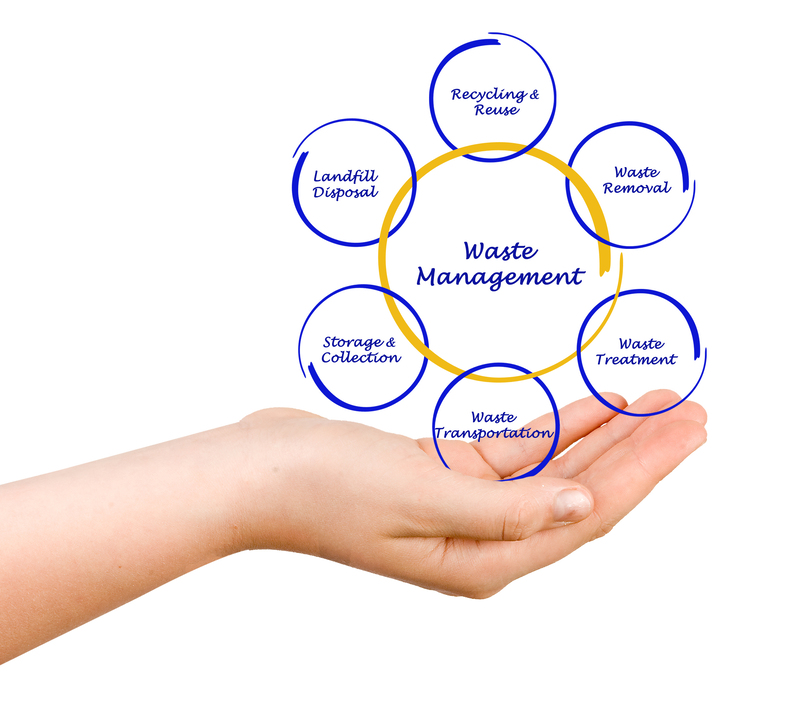Protecting the Environment While Getting Rid of PPE Waste
The global response to health crises like the COVID-19 pandemic has made personal protective equipment (PPE) such as masks, gloves, gowns, and face shields an essential part of everyday life. However, the widespread use of PPE has led to a significant increase in waste, causing serious environmental concerns. How can we responsibly dispose of or recycle PPE in an eco-friendly manner? In this comprehensive, informative article, we explore ways to protect the environment while getting rid of PPE waste, along with practical tips and emerging solutions.
Understanding the PPE Waste Problem
PPE was designed to protect people -- but what protects the planet from this sudden flood of disposable items? Understanding the scope of the PPE waste problem is the first step toward environmental protection and responsible waste management.
What Is PPE and Why Is It Important?
Personal protective equipment (PPE) includes any device or gear intended to shield individuals from health risks. This can include:
- Face masks (disposable and cloth masks)
- Gloves (nitrile, latex, vinyl)
- Gowns and aprons
- Face shields and goggles
While these items are crucial for disease prevention, their single-use nature is at odds with sustainable waste management practices.
The Environmental Impact of Improper PPE Disposal
Every day, millions of masks, gloves, and other PPE items are disposed of, often incorrectly. The environmental impacts include:
- Littering in streets and public places, leading to urban pollution.
- Blockage of sewage and drainage systems by improperly discarded PPE.
- Harm to wildlife that ingest or become entangled in PPE waste.
- Microplastic pollution, since most PPE is made of synthetic polymers that do not biodegrade quickly.
According to recent studies, an estimated 129 billion face masks and 65 billion gloves are used every month globally. If not handled properly, this vast amount contributes substantially to pollution and landfill overflow.

Best Practices for Managing PPE Waste
How do we balance public health and environmental sustainability? Here are proven strategies for environmentally-friendly PPE waste disposal:
1. Proper Segregation of PPE Waste
Segregating PPE from regular household and recyclable waste is vital. Medical PPE waste can potentially be infectious and requires special handling.
- Use designated bins: Dispose used masks and gloves in dedicated PPE bins, marked clearly to avoid confusion.
- Seal waste properly: Tie bags securely before discarding to minimize contamination risks.
- Label infectious waste: For medical facilities and care homes, follow local regulations for segregating and labeling infectious waste streams.
2. Promoting Reusable PPE Options
Shifting from disposable to reusable PPE wherever possible can massively reduce total waste output.
- Cloth face masks can replace most disposable masks in public settings (excluding healthcare).
- Reusable face shields and goggles can be disinfected and used repeatedly.
Always follow manufacturer and health authority cleaning guidelines to ensure reusable PPE remains effective and safe.
3. Safe Disposal Methods
To protect the environment while disposing of PPE waste, follow these steps:
- Do not throw PPE items in recycling bins, as it can contaminate recyclables and endanger sanitation workers.
- Avoid littering: Never leave used masks, gloves, or other PPE in public places, natural environments, or waterways.
- Cut ear loops and straps: This reduces the risk of wildlife entanglement with discarded masks and shields.
- Double-bag PPE waste: In case of suspected contamination, place used PPE in a second bag before disposal.
Innovative Solutions for PPE Waste Management
Tackling PPE pollution requires more than good habits from individuals. Researchers, innovators, and communities are developing creative methods for eco-friendly PPE disposal and recycling.
1. Advanced Recycling Techniques
Traditional recycling systems are not equipped to handle PPE waste because of contamination and material composition. However, new initiatives are overcoming these barriers:
- Specialized PPE recycling programs: Companies like Terracycle collect and process disposable masks and gloves, transforming them into raw materials for benches, construction panels, and more.
- Chemical recycling: Cutting-edge technology breaks down plastics in PPE into monomers that can be reused, bypassing traditional melting processes.
2. Biodegradable and Compostable PPE
Biodegradable PPE is becoming more common. Made from sustainable materials like polylactic acid (PLA) or plant fibers, these products degrade much faster than conventional plastics.
- Biodegradable masks and gloves can reduce landfill pressure and curb microplastic pollution.
- Industrial composting can further break down certain compostable PPE, though requirements may vary.
Transitioning to green alternatives is an excellent long-term solution, but their availability and cost currently limit widespread adoption.
3. Waste-to-Energy Initiatives
Certain facilities can process PPE waste through waste-to-energy plants, converting non-recyclable plastics into electricity or fuel. This reduces landfill burden and recycles energy from waste that cannot otherwise be reused.
The Role of Institutions and Policy
Individual efforts matter, but government policies and community initiatives are essential for large-scale change. Here's how institutions contribute to environmentally responsible PPE disposal:
Healthcare Facilities and Large Organizations
- Implement strict waste management protocols: Ensure staff are trained to segregate and package PPE waste safely.
- Participate in take-back and recycling programs: Partner with service providers offering specialized disposal or recycling.
Local and National Governments
- Pass legislation supporting PPE recycling and green product innovation.
- Subsidize biodegradable PPE manufacturing and incentivize research into sustainable alternatives.
- Educate the public about responsible PPE waste disposal methods and the environmental impact of improper handling.
Community Initiatives
- Neighborhood clean-ups: Volunteer groups can collect littered PPE from parks, streets, and beaches.
- Awareness campaigns: Teaching proper PPE disposal through posters, social media, and community events.
Practical Tips for Individuals: How to Dispose of PPE Responsibly
Every person can contribute to protecting the environment while getting rid of PPE waste. Try these tips in your daily routine:
- Carry a small bag or container for used masks and gloves when on the go -- prevent litter.
- Switch to reusable PPE when not in high-risk environments.
- Keep used PPE away from children and pets, and dispose of it regularly.
- Never flush PPE down the toilet. It clogs pipes and pollutes waterways.
- Stay informed about your local regulations for household hazardous waste.
- Participate in mask/glove recycling drop-offs wherever available.
FAQs: PPE Waste and Environmental Protection
Can PPE be recycled through curbside recycling programs?
No, standard municipal recycling does not accept used masks, gloves, or gowns. PPE can contaminate other recyclables and may pose a health risk to sanitation workers.
What is the best way to dispose of single-use masks?
Place them in a sealed garbage bag, cut the ear loops, and separate from recyclables and compostables. Avoid leaving masks in public spaces.
Is it safe to burn PPE waste at home?
Never burn PPE at home. It releases toxic chemicals and pollutants. Only approved industrial waste-to-energy plants should process plastic-based PPE.
Are cloth masks really safe and effective?
For public settings, multilayer cloth masks offer effective protection and can be washed and reused. In healthcare or high-risk environments, use only approved PPE.

The Future of Sustainable PPE Disposal
As pandemics and emerging health threats become part of the new normal, rethinking PPE waste management is crucial for protecting both people and the planet. With innovative recycling technology, community action, government support, and responsible individual behavior, we can mitigate the environmental impact of necessary protective gear.
The key to protecting the environment while getting rid of PPE waste lies in collaboration, innovation, and sustained commitment. By following the solutions and strategies outlined above, we can ensure that the gears designed to safeguard human lives don't end up harming the earth.
Conclusion: Every Action Counts
The challenge of PPE waste management is global, but the outcomes depend on choices made at local and individual levels. Make a commitment today: choose reusable PPE where possible, dispose of single-use items correctly, and support policies that protect the planet for generations to come.
Remember, protecting yourself does not have to come at the expense of the environment. With knowledge, responsibility, and innovation, we can work towards a cleaner, safer future for all.
